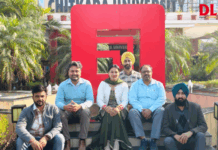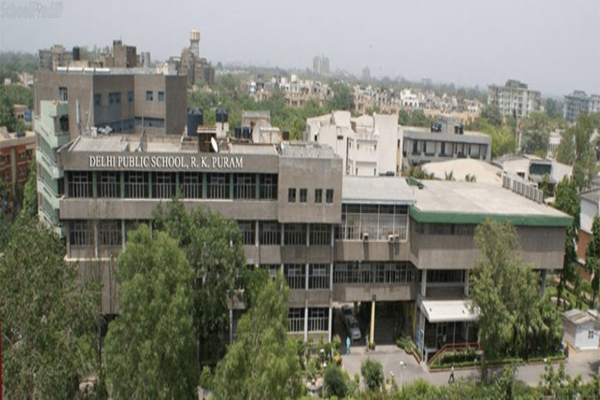Schools all set to enter 'space age'
Schools in the state Tamil Nadu are set to reap the benefits of space-age technology with the State project directorate of the Sarva Siksha Abhiyan (SSA) launching a project to digitally map all schools to cover 'bald patches'.
The project, School GIS, will use the Geographic Information System and the Global Positioning System to spatially generate digital format maps under the District Information System for Education (DISE). The maps will be used to generate data on which habitations do not have access to schools and which schools need to be upgraded. Schools low on performance and enrolments will be identified.
The DISE has been revised this year to include data on unrecognised schools. Tamil Nadu was the first State to achieve complete coverage under DISE in 2004-05 and the reports thus generated will be shared with stakeholders at various levels.
Cutting-edge technology for education sector
AutoDesk Inc. has launched a global student engineering and design community portal (http://students.autodesk.com) in India, to educate the students with latest 3D design technologies and prepare them for careers in engineering as well as design. It will also enable global interaction.
 Students and faculties across the country can access the portal by entering the university id. Consumers of the community will have access to a number of tutorials, different forums, class discussions, social networking, a library of international projects, case studies, and search for employment and internship.
Students and faculties across the country can access the portal by entering the university id. Consumers of the community will have access to a number of tutorials, different forums, class discussions, social networking, a library of international projects, case studies, and search for employment and internship.
Autodesk's recent initiative is aimed at acquainting Indian students with the wide possibilities that 3D design technologies offer and provide them a larger platform for marketing themselves to the global community. Providing students and educators the opportunity to freely download and use such high-end software packages along with the training materials is going to help advance 'design enablement' of India.
UGC plans virtual university, with on-line exams
As educational institutes gear up to increase the number of seats in view of the new quota bill, the University Grants Commission has mooted a proposal of setting up a virtual varsity, that does away with the need for classrooms.
The proposed university does away with the concept of classrooms and offers interaction with teachers via television using the Edusat satellite and also makes available the study material on the Internet that can be accessed from home. Exams, too, would be conducted on-line for different undergraduate and post-graduate courses.
The proposal by the Consortium for Educational Communication (CEC), an inter-university wing of University Grants Commission (UGC), comes against the backdrop of a bill passed by the Parliament that mandates increase in number of seats to allow quotas for OBCs in Government-aided educational institutions. CEC has installed satellite interactive terminals in most of the general universities across the country where students can go and participate in the programmes.
The CEC has also installed receive-only terminals in several colleges, including 72 institutions in north-eastern States. The programmes will be available in these centres, but the students will not have the scope to interact with the experts here.
IBS Launches India's First AI Focused Institute
Intelligent Business Systems (IBS), the AI-based business competitiveness solutions firm, has announced the launch of IBS Education Pvt Ltd (IBSE).
 It will bring to India research-based education and training in areas of Artificial Intelligence and Robotics. It will offer customised courses for corporates, and long-term graduate and postgraduate level degrees like MSc, MPhil & PhD in areas such as Computational Neuroscience, Intelligent Systems and Computational Intelligence. It plans to target software professionals, who are working in software companies, IT departments and also students with MCA, B.Tech and B.E qualifications for its short-term and long-term courses.
It will bring to India research-based education and training in areas of Artificial Intelligence and Robotics. It will offer customised courses for corporates, and long-term graduate and postgraduate level degrees like MSc, MPhil & PhD in areas such as Computational Neuroscience, Intelligent Systems and Computational Intelligence. It plans to target software professionals, who are working in software companies, IT departments and also students with MCA, B.Tech and B.E qualifications for its short-term and long-term courses.
MS lines up pilot Tathya Mitra kiosks in Bengal
Microsoft Corporation has partnered with the panchayat and rural development (P&RD) department of government of West Bengal to set up five pilot 'Tathya Mitra' kiosks at the gram panchayat level in the state. These kiosks will assess the information needs of the rural
people and viability and sustainability of their operation on commercial basis through women SHG members. Two of these kiosks will come up in Purba Medinipur and three in Birbhum district. These 'Tathya Mitra' kiosks will employ ICT to catalyse progress and access to information, education, e-governance, tele-medicine services, amongst others, in the rural areas.
IITs seek quotas for foreign students
The seven IITs have asked the HRD ministry to reserve 25% post-graduate seats and 10% faculty posts for foreigners. The idea to introduce reservations for foreigners was mooted after all the seven
directors agreed that having a mix of “unlike minds with different backgrounds” will work towards enhancing the academic environment on campuses.
This is not the first initiative aimed at widening the pool of students. In fact, to draw talent from overseas, the IITs have also announced setting up jee centres in Singapore and West Asia. As part of the expansion plan to accommodate 27% OBC students, campuses will require 1,200-1,500 more faculty members. Officials hope to meet some of the demand by recruiting abroad.
Vocational subjects in CBSE course soon
The Central Board of Secondary Education (CBSE) will be introducing vocational subjects required by the industry at the plus-two level in a phased manner to equip students for employment.
The course would be known as Professional Competency Education or Occupational Oriented Education and some of them have been identified so far. The subjects could range from health care, fashion and garment technology, BPO call centre courses to financial management transactions. President A P J Abdul Kalam had spoken about equipping students with vocational training at the ten-plus-two level saying there was a need for them to acquire skill at that stage.
BMC's mantra for exam success is 'live@school'
 The Brihanmumbai Municipal Corporation (BMC) has hit upon a new idea to improve Secondary School Certificate examination results in its schools. Students will be asked to make the school their home for three months preceding the exams. This, officials feel, will ensure that BMC students score better. To implement the proposal, the BMC has sought the support of NGOs to provide the necessary facilities, serve lunch and dinner, organise lectures on concentration, and maintain physical and psychological fitness. But the proposal is facing some opposition in the BMC's education committee, a body comprising corporators. The committee has decided that parents' permission must be sought before implementing the proposal.
The Brihanmumbai Municipal Corporation (BMC) has hit upon a new idea to improve Secondary School Certificate examination results in its schools. Students will be asked to make the school their home for three months preceding the exams. This, officials feel, will ensure that BMC students score better. To implement the proposal, the BMC has sought the support of NGOs to provide the necessary facilities, serve lunch and dinner, organise lectures on concentration, and maintain physical and psychological fitness. But the proposal is facing some opposition in the BMC's education committee, a body comprising corporators. The committee has decided that parents' permission must be sought before implementing the proposal.
Schools all set to enter 'space age'
Schools in the state Tamil Nadu are set to reap the benefits of space-age technology with the State project directorate of the Sarva Siksha Abhiyan (SSA) launching a project to digitally map all schools to cover 'bald patches'.
The project, School GIS, will use the Geographic Information System and the Global Positioning System to spatially generate digital format maps under the District Information System for Education (DISE). The maps will be used to generate data on which habitations do not have access to schools and which schools need to be upgraded. Schools low on performance and enrolments will be identified.
The DISE has been revised this year to include data on unrecognised schools. Tamil Nadu was the first State to achieve complete coverage under DISE in 2004-05 and the reports thus generated will be shared with stakeholders at various levels.
Cutting-edge technology for education sector
AutoDesk Inc. has launched a global student engineering and design community portal (http://students.autodesk.com) in India, to educate the students with latest 3D design technologies and prepare them for careers in engineering as well as design. It will also enable global interaction.
Students and faculties across the country can access the portal by entering the university id. Consumers of the community will have access to a number of tutorials, different forums, class discussions, social networking, a library of international projects, case studies, and search for employment and internship.
Autodesk's recent initiative is aimed at acquainting Indian students with the wide possibilities that 3D design technologies offer and provide them a larger platform for marketing themselves to the global community. Providing students and educators the opportunity to freely download and use such high-end software packages along with the training materials is going to help advance 'design enablement' of India.
UGC plans virtual university, with on-line exams
As educational institutes gear up to increase the number of seats in view of the new quota bill, the University Grants Commission has mooted a proposal of setting up a virtual varsity, that does away with the need for classrooms.
The proposed university does away with the concept of classrooms and offers interaction with teachers via television using the Edusat satellite and also makes available the study material on the Internet that can be accessed from home. Exams, too, would be conducted on-line for different undergraduate and post-graduate courses.
The proposal by the Consortium for Educational Communication (CEC), an inter-university wing of University Grants Commission (UGC), comes against the backdrop of a bill passed by the Parliament that mandates increase in number of seats to allow 
Project Sharada bags best IT usage award
 NICT an NGO of Indore bagged the first prize the first prize under the category “CSI-TCS Award for Best Usage” of the CSI National IT Awards 2004-06 for the year 2004-05, for implementation of “Project SHARADA” in Primary Schools run by the second
NICT an NGO of Indore bagged the first prize the first prize under the category “CSI-TCS Award for Best Usage” of the CSI National IT Awards 2004-06 for the year 2004-05, for implementation of “Project SHARADA” in Primary Schools run by the second
largest Municipal Corporation in the world, the Municipal Corporation Delhi, MCD.
Project Sharda is a unique project in which ICT is being used to meet the challenges faced by MCD primary schools like low retentions, enrollment disinterest in education and coming to school in the urban poor community. The project has contributed remarkably in the Govt. vision and concern about primary education its univeralisation, reach and affordability with quality education.
The award was given to NICT and MCD Jointly in a ceremony held during the 41st CSI annual convention of Computer Society of India (CSI) at Kolkata on 23rd November 2006. The theme of convention was “Affordable Computing”.







 Most believed that multimedia has enormous potential. Many tried to design rich multimedia experience. Some works but some does not work. A search was made for a multimedia application that fitted the ‘wish lists’ of end-users in a scoping study. The Sims was a popular game about Life Management, where players play a major role in the management of everyday family life like providing a place to stay, managing finance, basic needs, moods and desires. The end-users had a very engaging experience interacting with this application. It was then chosen as a vehicle for these investigations. An Engagement Model was developed by the researcher through a number of experimental situations on end-users as they interact with this application. Findings from the experiments has given incites into what design factors that engages end-users and what does not when interacting with a multimedia application. The findings are not only useful in designing for children but in any e-learning environment.
Most believed that multimedia has enormous potential. Many tried to design rich multimedia experience. Some works but some does not work. A search was made for a multimedia application that fitted the ‘wish lists’ of end-users in a scoping study. The Sims was a popular game about Life Management, where players play a major role in the management of everyday family life like providing a place to stay, managing finance, basic needs, moods and desires. The end-users had a very engaging experience interacting with this application. It was then chosen as a vehicle for these investigations. An Engagement Model was developed by the researcher through a number of experimental situations on end-users as they interact with this application. Findings from the experiments has given incites into what design factors that engages end-users and what does not when interacting with a multimedia application. The findings are not only useful in designing for children but in any e-learning environment. To sum up the findings from the scoping study it appeared that what children wanted was an application that let them be in control, work at their own pace, manipulate the system, play a role in the action, create, see the things done on the screen immediately, have feedback that is not too delayed, and have goals either set for them or set by them
To sum up the findings from the scoping study it appeared that what children wanted was an application that let them be in control, work at their own pace, manipulate the system, play a role in the action, create, see the things done on the screen immediately, have feedback that is not too delayed, and have goals either set for them or set by them  A number of experimental stages were made in this study. The first group of experiments was conducted to find out if this multimedia application, The Sims, that has all five features, is really engaging. The next experiment was if the game is engaging, which of the factors contribute to the sense of engagement. A Preliminary Engagement Model was designed from these factors that contribute to engagement. The other experimental studies that follow were conducted to test this model. Factors in the model were dismantled to test, design, retest and redesign under varying conditions till the Engagement Model gets its final form.
A number of experimental stages were made in this study. The first group of experiments was conducted to find out if this multimedia application, The Sims, that has all five features, is really engaging. The next experiment was if the game is engaging, which of the factors contribute to the sense of engagement. A Preliminary Engagement Model was designed from these factors that contribute to engagement. The other experimental studies that follow were conducted to test this model. Factors in the model were dismantled to test, design, retest and redesign under varying conditions till the Engagement Model gets its final form. Even though it did not prove possible to disentangle all of the engagement factors so that they could be separately tested, the following overall conclusions could be drawn from a systematic analysis set out to test the role of these five factors in creating an engaging experience. The findings were:
Even though it did not prove possible to disentangle all of the engagement factors so that they could be separately tested, the following overall conclusions could be drawn from a systematic analysis set out to test the role of these five factors in creating an engaging experience. The findings were: However, children were not necessarily engaged just by
However, children were not necessarily engaged just by Students and faculties across the country can access the portal by entering the university id. Consumers of the community will have access to a number of tutorials, different forums, class discussions, social networking, a library of international projects, case studies, and search for employment and internship.
Students and faculties across the country can access the portal by entering the university id. Consumers of the community will have access to a number of tutorials, different forums, class discussions, social networking, a library of international projects, case studies, and search for employment and internship. It will bring to India research-based education and training in areas of Artificial Intelligence and Robotics. It will offer customised courses for corporates, and long-term graduate and postgraduate level degrees like MSc, MPhil & PhD in areas such as Computational Neuroscience, Intelligent Systems and Computational Intelligence. It plans to target software professionals, who are working in software companies, IT departments and also students with MCA, B.Tech and B.E qualifications for its short-term and long-term courses.
It will bring to India research-based education and training in areas of Artificial Intelligence and Robotics. It will offer customised courses for corporates, and long-term graduate and postgraduate level degrees like MSc, MPhil & PhD in areas such as Computational Neuroscience, Intelligent Systems and Computational Intelligence. It plans to target software professionals, who are working in software companies, IT departments and also students with MCA, B.Tech and B.E qualifications for its short-term and long-term courses.  The Brihanmumbai Municipal Corporation (BMC) has hit upon a new idea to improve Secondary School Certificate examination results in its schools. Students will be asked to make the school their home for three months preceding the exams. This, officials feel, will ensure that BMC students score better. To implement the proposal, the BMC has sought the support of NGOs to provide the necessary facilities, serve lunch and dinner, organise lectures on concentration, and maintain physical and psychological fitness. But the proposal is facing some opposition in the BMC's education committee, a body comprising corporators. The committee has decided that parents' permission must be sought before implementing the proposal.
The Brihanmumbai Municipal Corporation (BMC) has hit upon a new idea to improve Secondary School Certificate examination results in its schools. Students will be asked to make the school their home for three months preceding the exams. This, officials feel, will ensure that BMC students score better. To implement the proposal, the BMC has sought the support of NGOs to provide the necessary facilities, serve lunch and dinner, organise lectures on concentration, and maintain physical and psychological fitness. But the proposal is facing some opposition in the BMC's education committee, a body comprising corporators. The committee has decided that parents' permission must be sought before implementing the proposal.
 NICT an NGO of Indore bagged the first prize the first prize under the category “CSI-TCS Award for Best Usage” of the CSI National IT Awards 2004-06 for the year 2004-05, for implementation of “Project SHARADA” in Primary Schools run by the second
NICT an NGO of Indore bagged the first prize the first prize under the category “CSI-TCS Award for Best Usage” of the CSI National IT Awards 2004-06 for the year 2004-05, for implementation of “Project SHARADA” in Primary Schools run by the second 











